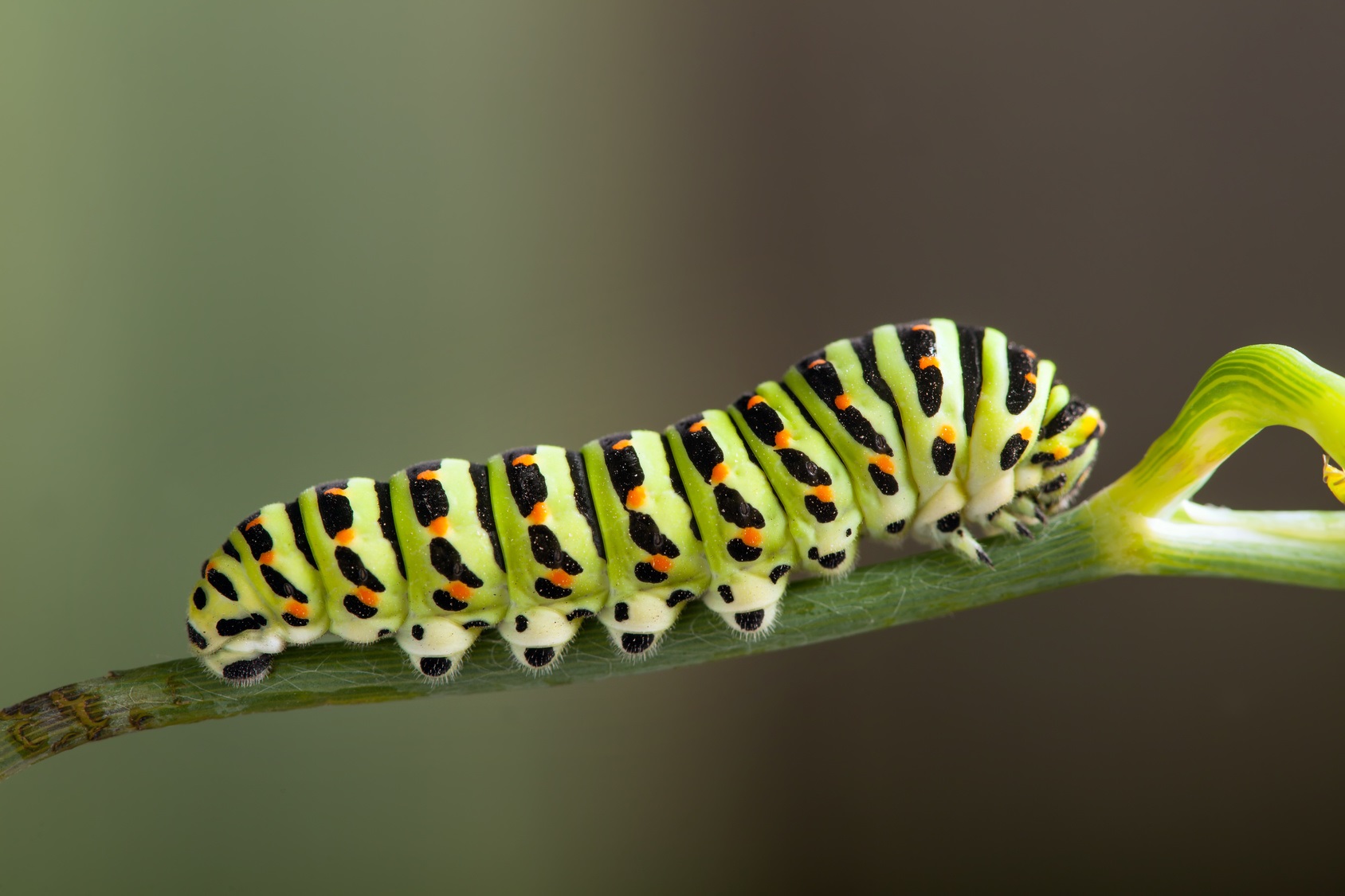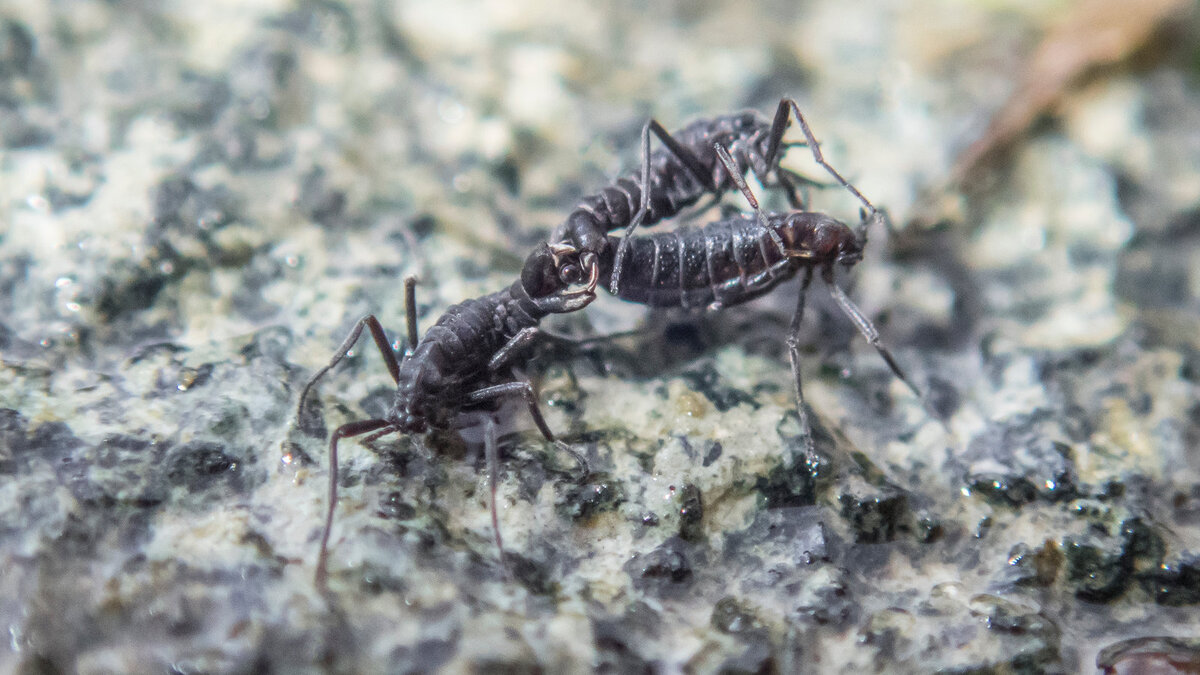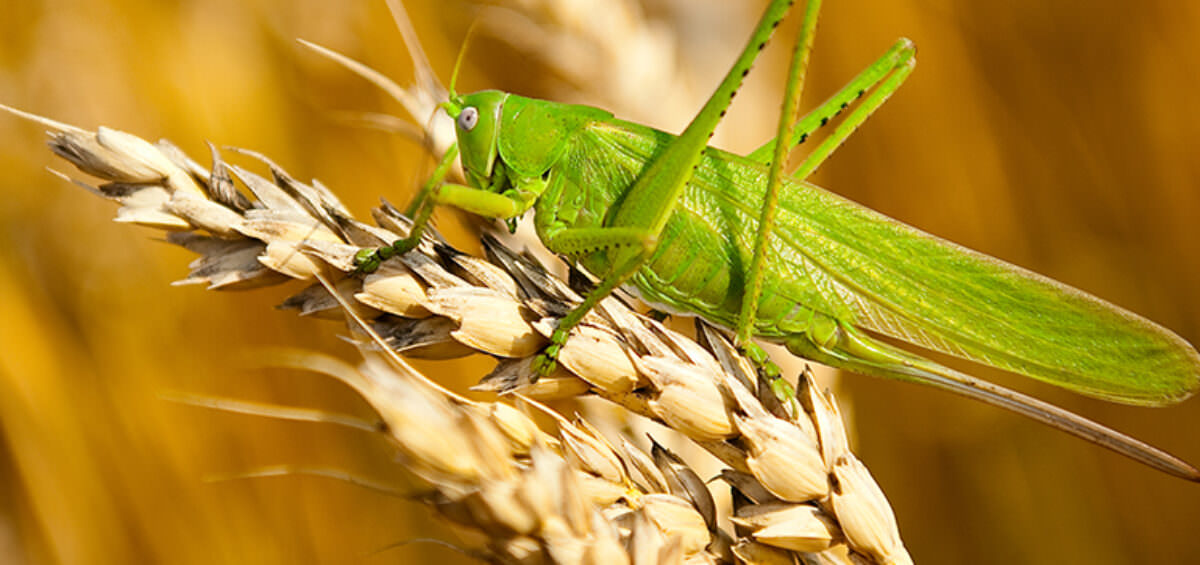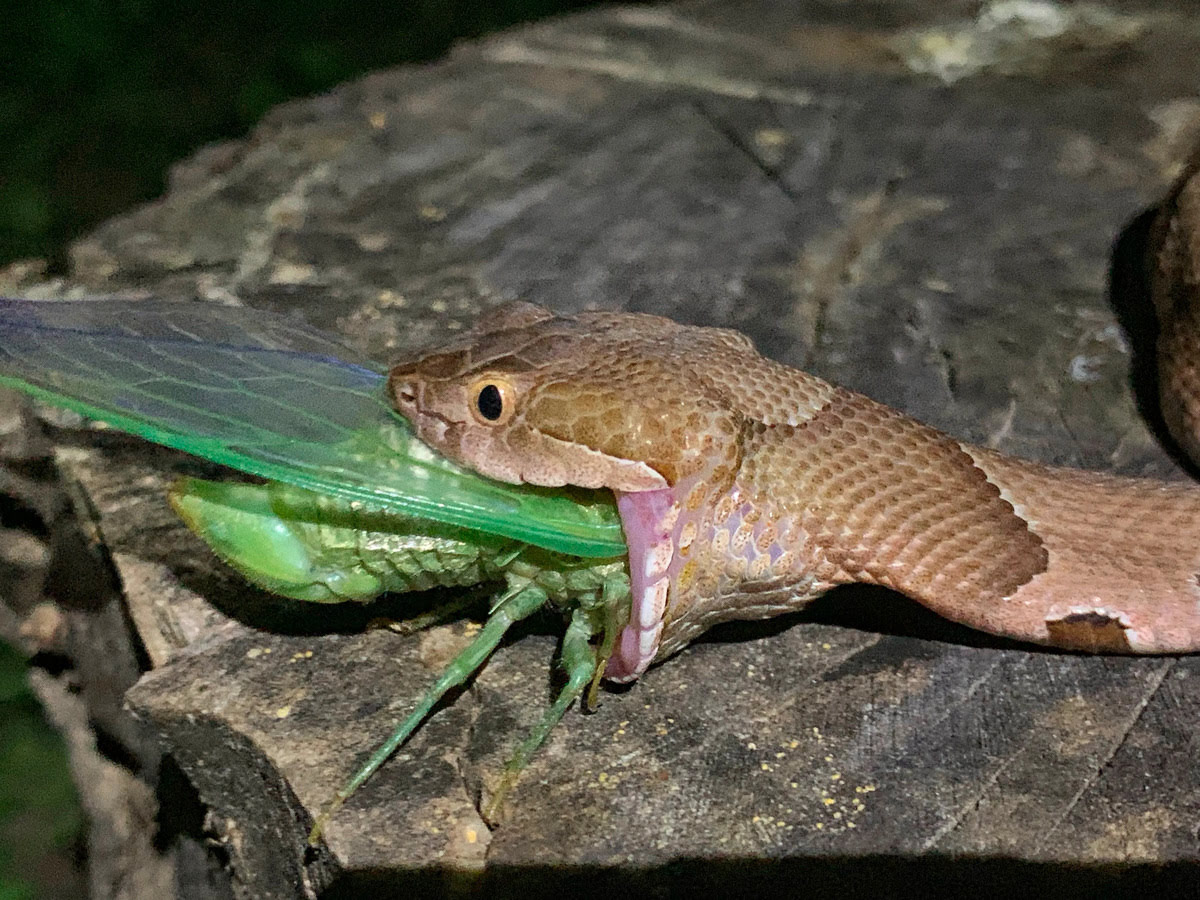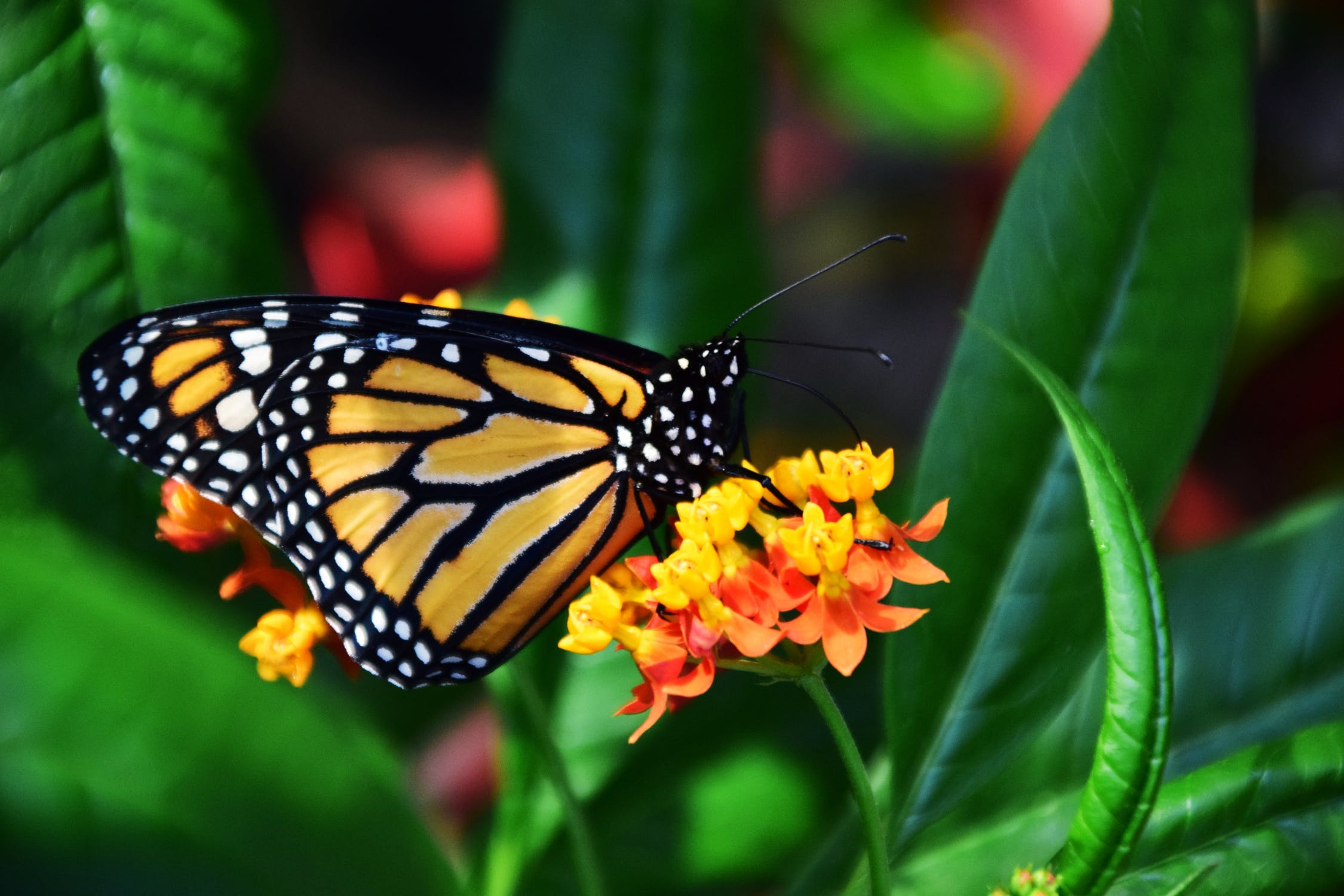Home>Gardening News and Trends>Latest News>What Is Thorax In Insects
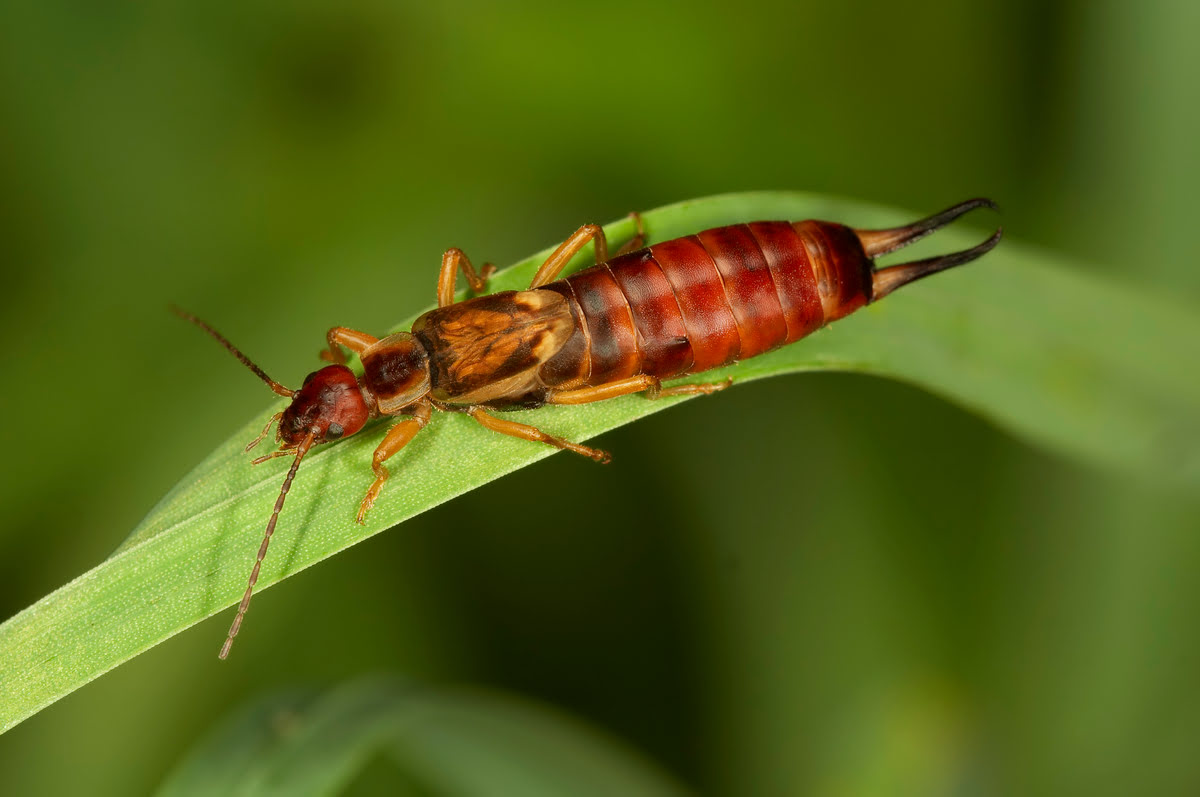

Latest News
What Is Thorax In Insects
Published: November 30, 2023
Discover the latest news on thorax in insects. Explore the anatomy, function, and significance of the thorax in this informative article.
(Many of the links in this article redirect to a specific reviewed product. Your purchase of these products through affiliate links helps to generate commission for Chicagolandgardening.com, at no extra cost. Learn more)
Table of Contents
Introduction
The thorax is a crucial component of an insect’s anatomy, serving as the main power center for its locomotion and vital bodily functions. Situated between the head and the abdomen, the thorax houses the wings and legs, enabling insects to perform a variety of actions such as flying, walking, and jumping.
Comprised of three segments – the prothorax, mesothorax, and metathorax – the thorax provides structural support and houses the essential systems that allow insects to survive and thrive. From the coordination of muscles for movement to the respiratory and reproductive systems, the thorax plays a vital role in an insect’s overall functioning.
Understanding the anatomy and functions of the thorax is crucial for comprehending the remarkable abilities and adaptive nature of insects. In this article, we will delve into the intricate details of the insect thorax, exploring its segmentation, muscular system, appendages, respiratory and circulatory systems, as well as its role in reproduction. By the end, you will gain an appreciation for the complexity and significance of this crucial region in the insect’s body.
Anatomy of the Insect Thorax
The insect thorax is a remarkable structure that comprises three distinct segments: the prothorax, mesothorax, and metathorax. Each segment is specialized and equipped with unique features that allow insects to perform various locomotor tasks and carry out specific functions.
The prothorax, located closest to the insect’s head, is the most anterior segment of the thorax. It is typically the smallest of the three segments and is responsible for supporting and controlling the movement of the insect’s first pair of legs. Additionally, the prothorax is often equipped with structures called pronotal pads, which provide support and cushioning for the insect during flight or when landing.
The mesothorax, located in the middle of the thorax, is the largest segment and is responsible for the coordination and movement of the insect’s wings. Insects that possess wings, such as bees, butterflies, and dragonflies, have a pair of wings attached to the mesothorax. The wings are shaped and structured differently depending on the insect’s species and lifestyle, allowing for various flight patterns and capabilities.
The metathorax, located furthest from the insect’s head, is responsible for supporting and controlling the movement of the insect’s hind legs. In certain insects, such as grasshoppers and fleas, the hind legs are highly specialized for jumping, enabling these insects to cover great distances quickly.
The thorax is also characterized by the presence of hardened exoskeletal plates called sclerites. These sclerites provide structural support and protection for the internal organs within the thorax. Furthermore, the thorax is connected to the abdomen through a flexible joint, allowing for a wide range of movement and flexibility.
In addition to the specific structures within each segment, the insect thorax contains a network of tracheae, which are the tubes responsible for gas exchange. These tracheae supply oxygen to various body tissues and remove carbon dioxide, ensuring the insect’s respiratory needs are met. The tracheal system is highly efficient and allows insects to engage in activities that require a great deal of energy, such as flight.
Understanding the complex anatomy of the insect thorax provides insights into how insects are able to accomplish incredible feats and thrive in diverse environments. The specialization of each segment and the presence of various structures and systems within the thorax contribute to the remarkable adaptability and success of insects.
Segmentation of the Thorax
The thorax of an insect is divided into three distinct segments: the prothorax, mesothorax, and metathorax. Each segment plays a crucial role in the overall functioning and locomotion of the insect.
The prothorax is the foremost segment of the thorax, located closest to the head. It is easily recognizable due to its distinct shape and size. The prothorax typically bears a pair of small wings, known as tegmina, in insects that have them, such as grasshoppers and crickets. These wings serve primarily a protective function, covering the hind wings and shielding them from harm. In some specialized insects, the prothorax may also bear other structures, such as spines or fangs, which aid in defense or capturing prey.
The mesothorax is the middle segment of the thorax and is often the largest. This segment is responsible for the attachment and movement of the forewings, or the primary flight wings. The forewings, also known as elytra in beetles, provide insect species with their characteristic flying abilities. In certain insects, such as beetles and bugs, the forewings have hardened and protective outer coverings that shield the hindwings and the body from external threats. The mesothorax is also crucial for providing stability and balance during flight.
The metathorax is the hindmost segment of the insect thorax, located closest to the abdomen. It is primarily responsible for supporting and controlling the hindwings. The hindwings are typically larger and more specialized than the forewings, enabling insects to perform complex flight maneuvers. In some insect species, such as bees and wasps, the metathorax is connected to glands that produce and store venom for defense or capturing prey. Additionally, the metathorax also houses the powerful muscles that control the movement of the hind legs, which are often used for jumping or grasping.
The segmentation of the thorax allows for specialized functions and movements in different parts of the insect’s body. This division ensures efficient locomotion and the coordination of various appendages, such as wings and legs, enabling insects to navigate their environment with precision and adaptability.
Functions of the Thorax in Insects
The thorax of an insect serves a multitude of crucial functions that contribute to their survival, locomotion, and overall well-being. From facilitating flight to providing support and control of appendages, the thorax plays a vital role in the life of an insect.
One of the primary functions of the thorax is related to flight. Insects have evolved remarkable adaptations in their thoracic structure to enable flight, allowing them to access new resources and evade predators. The mesothorax, in particular, is central to flying insects, as it houses the powerful muscles that control the movement of wings. These muscles contract and relax rapidly, generating the necessary force to propel the insect through the air. The intricate coordination of muscle movements in the thorax enables insects to maneuver with agility and precision during flight.
Aside from flight, the thorax is responsible for supporting and controlling the movement of the insect’s legs. The prothorax, mesothorax, and metathorax each bear a pair of legs, which are adapted for different purposes based on the insect’s lifestyle. The legs, with their specialized structures, allow insects to walk, climb, jump, swim, or grab onto surfaces. The thorax provides the necessary stability and flexibility for efficient leg movements, ensuring insects can navigate their environment and engage in various activities essential for survival.
Furthermore, the thorax is involved in the coordination of multiple appendages, such as wings and legs, during complex behaviors. Whether it’s cleaning the body, manipulating food, or engaging in intricate courtship rituals, the thorax acts as a central hub for coordinating these movements. The muscular system within the thorax controls the precise timing and coordination of these appendages, enabling insects to perform intricate tasks with remarkable dexterity.
In addition to locomotion and appendage control, the thorax also houses vital systems such as the circulatory, respiratory, and nervous systems. The circulatory system, consisting of a tubular network of vessels, distributes nutrients, hormones, and oxygen throughout the insect’s body. The respiratory system, through a network of air tubes called tracheae, allows for efficient oxygen uptake and carbon dioxide release. The nervous system within the thorax coordinates sensory input and motor output, facilitating rapid responses to external stimuli. The thorax acts as a central hub, connecting these systems and facilitating their seamless integration for optimal insect functioning.
Overall, the functions of the thorax in insects are diverse and essential for their survival and adaptation to various environments. From flight and leg movement to coordination of appendages and housing vital systems, the thorax serves as a remarkable hub of activity, enabling insects to thrive and conquer diverse ecological niches.
Muscles in the Thorax
The thorax of an insect is equipped with a complex network of muscles that play a vital role in its locomotion and overall functionality. These muscles enable insects to perform a wide range of movements, from flight to walking, jumping, and grasping.
The main muscles in the thorax are categorized into two types: the direct flight muscles and the indirect flight muscles. Both types work together to generate the powerful contractions required for flight in insects.
Direct flight muscles are located within the thorax and are directly attached to the wings. These muscles are responsible for the up and down motion of the wings, generating the necessary lift to keep the insect airborne. Direct flight muscles contract and relax rapidly, allowing for the intricate and precise movements required for flight. These muscles can be further classified based on their attachment points on the wings, such as longitudinal muscles that attach along the length of the wings or transverse muscles that span across the wings.
Indirect flight muscles, on the other hand, are not directly attached to the wings. Instead, they are connected to the thoracic walls and function by altering the shape of the thorax. When these muscles contract, they cause the thoracic walls to deform, creating the necessary changes in pressure and shape that drive wing movements. Indirect flight muscles are capable of producing rapid and efficient wing beats, allowing insects to maneuver and fly with precision.
The coordination and synchronization of these flight muscles are crucial for efficient flight in insects. Insects are capable of adjusting the frequency and amplitude of wing beats to adapt to different flight speeds or environmental conditions. These remarkable muscle systems work together to generate the necessary lift, thrust, and stability required for flying insects to explore their environment, find mates, collect resources, and escape predators.
In addition to flight muscles, the thorax also contains muscles that control the movement of legs and other appendages. These muscles enable insects to walk on different surfaces, jump over obstacles, swim in water, or grasp and manipulate objects. By contracting and relaxing these muscles, insects can perform precise and coordinated movements using their legs and appendages.
The intricate network of muscles in the thorax is a testament to the adaptability and remarkable abilities of insects. The coordination and control of these muscles allow insects to perform complex tasks and navigate diverse environments, showcasing the incredible versatility that is a hallmark of their success as a group of organisms.
Types of Thoracic Appendages
The thorax of insects is equipped with a variety of specialized appendages that serve essential functions in their locomotion, feeding, defense, and reproduction. These appendages, located on the prothorax, mesothorax, and metathorax, are adapted to suit the specific needs and lifestyles of different insect species.
The most common and well-known thoracic appendages are wings. Insects possess one or two pairs of wings, depending on the species. Wings are primarily found on the mesothorax and metathorax and enable insects to achieve flight. They come in various shapes and sizes, including membranous wings found in bees and wasps, hardened elytra in beetles, and delicate and colorful wings in butterflies. The ability to fly has allowed insects to access new food sources, escape predators, and colonize different habitats.
Legs are another important type of thoracic appendage. Insects typically have six legs, with each segment of the thorax bearing a pair. The legs are equipped with various structures, such as claws, spines, or adhesive pads, that allow insects to walk, climb, jump, or grasp onto surfaces. The functionality and structure of the legs may vary depending on the insect’s lifestyle. For example, grasshoppers have long and powerful hind legs specialized for jumping, while spiders have legs adapted for capturing and immobilizing prey.
Antennae, found on the head segment, can also be considered as thoracic appendages because they differentiate into specific forms in different insect groups. The antennae serve as sensory organs, allowing insects to detect and interpret their environment. They are equipped with sensory receptors that can detect chemical signals, vibrations, and even changes in temperature. Antennae play a crucial role in locating food sources, communicating with other insects, and navigating their surroundings.
In some insect species, specialized structures called cerci are present on the metathorax. Cerci have various functions depending on the insect group. They can serve as sensory appendages, detecting air currents or vibrations, or as defense mechanisms, helping to ward off predators. Cerci are particularly prominent in grasshoppers and other insects that rely on their powerful hind legs for jumping and evasive maneuvers.
Other less common but still significant thoracic appendages include lures or scent-emitting organs found in certain beetles, modified legs for prey capture in mantises, or structures used for sound production and communication in crickets and katydids.
These diverse thoracic appendages highlight the adaptability and specialization that insects have developed over millions of years. From wings for flight, legs for locomotion, antennae for sensory perception, to various other structures tailored for specific purposes, thoracic appendages allow insects to thrive in their respective ecological niches and carry out the behaviors essential for their survival and reproduction.
Respiratory System in the Thorax
The respiratory system of insects is a remarkable adaptation that allows for efficient gas exchange and oxygen delivery to their tissues. Insects lack lungs like vertebrates do, instead relying on a network of air tubes, called tracheae, which extend throughout their bodies, including the thorax.
Within the thorax, the tracheae branch out and distribute oxygen to the muscles, organs, and tissues. They deliver oxygen directly to the cells, ensuring a rapid and efficient supply. The tracheal system is composed of tiny tubes that decrease in diameter as they branch out, ultimately terminating in small, fluid-filled structures called tracheoles. These tracheoles come into direct contact with individual cells, allowing for efficient gas exchange between air and tissues.
The respiratory system in the thorax is essential for facilitating the high energy demands of flight, as well as other physiologically demanding activities such as rapid movement and reproduction. Insects have evolved various mechanisms to regulate the flow of air and optimize oxygen uptake. These mechanisms include changes in thoracic movements, body temperature regulation, and movements of the abdominal muscles.
The coordination of respiration in the thorax and other body parts is crucial for efficient oxygen transport. In flying insects, for example, thoracic movements during flight aid in maintaining a continuous flow of oxygen-rich air to the tissues. Muscular contractions and extensions of the thorax create pressure gradients, leading to air movement through the tracheal tubes. This ensures a constant supply of oxygen to meet the high metabolic demands of flight.
It is important to note that the respiratory system in the thorax is not only essential for oxygen uptake but also plays a role in carbon dioxide removal. As insects engage in cellular respiration, carbon dioxide, a waste product, is produced. The tracheal system provides an efficient pathway for carbon dioxide to exit the tissues and be expelled from the body.
Overall, the respiratory system in the thorax is a vital adaptation that enables insects to meet their energy demands, especially during flight and other physically demanding activities. The efficient delivery of oxygen to the cells and removal of carbon dioxide ensures the survival and functioning of various organs and tissues within the thorax and throughout the insect’s body.
Nervous System in the Thorax
The nervous system of insects, including the thorax, is a highly organized and intricate network that enables sensory perception, motor control, and coordination of behavior. The thoracic region houses crucial components of the nervous system, including ganglia, nerves, and sensory organs, which play a pivotal role in the functioning of insects.
Ganglia are clusters of nerve cell bodies that serve as processing centers for sensory information and motor control. In the thorax, ganglia are located near the base of each segment, connecting to nerves that innervate various muscles and appendages. Ganglia in the thorax receive sensory input from different parts of the body, such as the antennae or legs, and coordinate responses through the activation of the appropriate motor neurons. This coordination ensures precise movements and reflexive responses to external stimuli.
The thorax is also equipped with sensory organs, such as sensilla and specialized hairs, which detect and transmit sensory information to the ganglia. Sensilla are tiny sensory organs located on the exoskeleton, and they can perceive various stimuli, including touch, temperature, humidity, vibration, and chemical cues. These sensory inputs play a crucial role in determining an insect’s behavior, such as feeding, mating, navigation, and evasion of predators. Sensory information from the thoracic region contributes to the overall perception of the environment and guides motor responses in insects.
The nerves within the thorax transmit signals between the ganglia and various muscles, appendages, and sensory organs. They facilitate the communication and coordination required for precise movement and sensory perception. Nerves in the thorax are responsible for the regulation of wing movements, leg coordination, and the transmission of sensory information to the central nervous system.
The thorax also plays a significant role in the integration of the nervous system with other physiological systems. For example, the coordination between the muscular system of the thorax and the nervous system is essential for flight control, where precise wing movements and adjustments are required for stable and agile flight. The nervous system in the thorax is also interconnected with the circulatory and respiratory systems, allowing for coordinated responses to changes in oxygen levels or energy demands.
In summary, the nervous system in the thorax is crucial for sensory perception, motor control, and behavior coordination in insects. Ganglia, nerves, and sensory organs located in the thorax work in unison to receive, process, and respond to sensory information, facilitating precise movements and adaptive behaviors. The integration of the nervous system with other physiological systems ensures the effective functioning and survival of insects in various environments and ecological niches.
Circulatory System in the Thorax
The circulatory system of insects, including the thorax, plays a vital role in the transport of nutrients, oxygen, hormones, and waste products throughout their bodies. Although insects lack a true heart and closed circulatory system like vertebrates, they have a unique circulatory system that efficiently distributes fluids and supplies oxygen to their organs and tissues.
The primary components of the insect circulatory system are the dorsal vessel and the associated network of tracheal tubes. The dorsal vessel, often referred to as the “heart,” is a long tube that extends along the dorsal side of the insect’s body. In the thorax, the dorsal vessel runs through the anterior segment, known as the aorta.
The dorsal vessel pumps hemolymph, which is the equivalent of blood in insects, forward through the body. Contractions of the dorsal vessel create a pulsating flow, distributing hemolymph to various areas of the insect’s body, including the thorax. Hemolymph contains nutrients, hormones, and immune cells, playing a crucial role in maintaining the overall health and functioning of the insect.
In the thorax, the hemolymph enters a series of branching tubes called sinuses. The sinuses permeate the thoracic muscles and organs, supplying nutrients and oxygen while also removing waste products. The circulatory system helps maintain the necessary metabolic function in the thorax, supporting the energy-demanding activities of flight and movement.
The tracheal tubes, part of the respiratory system, also have a role in the thoracic circulation. These tubes, which deliver oxygen directly to tissues, connect closely with the sinuses and help facilitate gas exchange within the thorax. The tracheal system ensures that oxygen is readily available to the thoracic muscles responsible for flight, leg movement, and other essential functions.
In addition to delivering oxygen and nutrients, the circulatory system in the thorax plays a role in thermoregulation. In flying insects, the rapid contraction and expansion of thoracic muscles generate heat, which is distributed via the circulatory system to maintain optimum body temperature. This regulation is crucial for flight performance and overall metabolic functioning.
The circulatory system in the thorax is also involved in the immune response of insects. Hemolymph contains immune cells and antimicrobial compounds, helping to defend against potential pathogens or injuries within the thoracic region. The circulatory system plays a vital role in detecting and responding to infections or injuries, ensuring the overall health of the thorax and the insect as a whole.
Overall, the circulatory system in the thorax of insects plays a crucial role in the distribution of nutrients, oxygen, and waste products, as well as in thermoregulation and immune response. This unique circulatory system ensures the delivery of essential resources to support the energy-demanding activities within the thorax, contributing to the overall health and survival of insects in their respective environments.
Reproductive System in the Thorax
The reproductive system of insects is a complex and diverse network of organs and structures that are responsible for the production, maturation, and transfer of gametes. While the reproductive organs are primarily located in the abdomen, the thorax also plays a crucial role in the reproductive process of insects.
In the thorax, specific structures and adaptations facilitate the transfer and storage of sperm during mating. Male insects possess specialized reproductive organs called aedeagi, which are located in the posterior region of the abdomen but are connected to the thorax through a narrow tube. During copulation, the sperm is transferred from the aedeagus into the female reproductive system for fertilization. In some species, the aedeagus may have additional structures, such as spines or hooks, which aid in grasping the female during mating or in transferring larger quantities of sperm.
Additionally, the thorax also contains structures that aid in the storage and transport of sperm within the female reproductive system. In certain insect species, the mesothorax and metathorax may have specialized glands called spermathecae. These sac-like structures serve as receptacles for storing sperm after mating. The sperm can then be released gradually to fertilize eggs as the female lays them.
In some insects, such as bees and wasps, the thorax is involved in the production of pheromones, chemical substances that play a pivotal role in reproductive processes. The thoracic glands, located within the thorax, produce and secrete pheromones that convey specific signals or messages to other members of the same species. These pheromones help attract mates, establish territories, or coordinate reproductive behaviors, thereby ensuring successful reproduction.
The thorax is also responsible for coordinating the muscular movements required for mating behavior. In many insect species, complex courtship rituals involve intricate movements of the thorax, wings, and legs. These movements serve as cues and signals to attract mates and ensure proper alignment during copulation. The coordination of these movements within the thorax is crucial for successful mating and offspring production.
The reproductive system in the thorax collaborates closely with the reproductive organs in the abdomen to ensure successful reproduction in insects. The specialized structures and adaptations in the thorax facilitate the transfer, storage, and release of gametes, as well as the production and release of reproductive pheromones. By coordinating these essential functions, the reproductive system in the thorax contributes to the successful continuation of the insect species.
Conclusion
The thorax of insects is a remarkable and multifunctional region that plays a crucial role in their survival, locomotion, and reproductive success. From its segmentation and anatomy to the specialized muscles, appendages, and systems within, the thorax showcases the incredible adaptability and ingenuity of insects.
The segmentation of the thorax into the prothorax, mesothorax, and metathorax allows for specialized functions and movements of various appendages, such as wings and legs. These appendages enable insects to fly, walk, jump, grab, and perform other essential tasks in their environments. The coordination of muscles in the thorax provides the necessary power and control for these movements, showcasing the intricate nature of insect locomotion.
The thorax also houses crucial systems such as the respiratory, circulatory, and nervous systems. The respiratory system, relying on tracheae and tracheoles, facilitates efficient gas exchange and oxygen delivery to tissues. The circulatory system, including the dorsal vessel and associated sinuses, ensures the distribution of nutrients, hormones, and waste products throughout the insect’s body. The nervous system, consisting of ganglia, nerves, and sensory organs, coordinates sensory perception, motor control, and behavior.
Additionally, the thorax plays a vital role in insect reproduction. Specialized reproductive organs and structures in the thorax aid in the transfer, storage, and release of gametes during mating. Moreover, the production and release of pheromones from thoracic glands help attract mates and coordinate reproductive behaviors.
In conclusion, the thorax in insects is a dynamic and critical region that enables their remarkable abilities and adaptive nature. Its segmentation, anatomy, muscles, appendages, and systems work together to facilitate flight, locomotion, reproduction, and overall survival. Understanding the intricacies of the thorax provides valuable insights into the incredible adaptations and diverse lifestyles of insects, showcasing their success as one of the most abundant and diverse groups of organisms on Earth.
